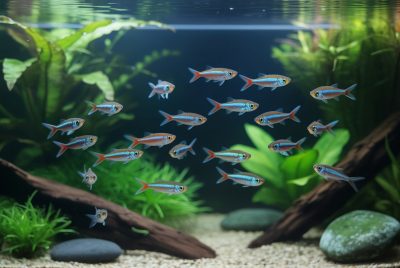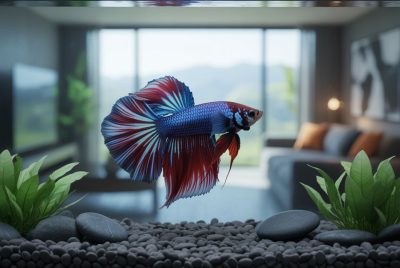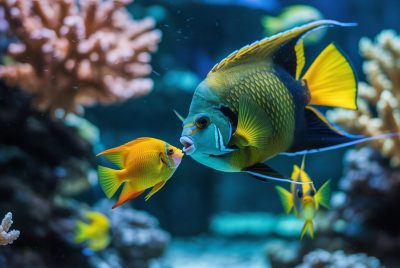Most Expensive Aquarium Fish: Ultimate Guide to Luxury Species
*We may earn a commission for purchases made using our links. Please see our disclosure to learn more.
The world of aquarium keeping transforms dramatically when you step into the realm of luxury fish collecting. Picture walking into an aquarium store and seeing price tags that rival luxury cars—this is the reality of the most expensive aquarium fish market. These extraordinary creatures represent the pinnacle of aquatic collecting, where rarity, beauty, and exclusivity converge to create some of the most sought-after specimens in the hobby.
The journey into expensive aquarium fish collecting isn’t just about prestige; it’s about preserving some of the ocean’s most magnificent and rare species while experiencing the unparalleled joy of caring for truly exceptional aquatic life. From the shimmering scales of platinum arowana to the ethereal beauty of rare angelfish variants, these fish represent living masterpieces that have captivated collectors worldwide.
Understanding the world of luxury aquarium fish requires more than just deep pockets—it demands knowledge, dedication, and a genuine appreciation for aquatic biodiversity. The most expensive aquarium fish aren’t just pets; they’re investments in conservation, artistry, and the preservation of genetic diversity that might otherwise be lost to habitat destruction and climate change.
“The most expensive aquarium fish represent not just luxury, but living jewels that connect us to the ocean’s most precious and endangered ecosystems.”
– Marine Biology Research Institute
Key Takeaways
- Rarity drives value: The most expensive aquarium fish are often rare due to limited breeding success, habitat destruction, or strict import regulations
- Investment potential: Premium aquarium fish can appreciate in value, with some specimens selling for hundreds of thousands of dollars
- Conservation importance: Purchasing expensive aquarium fish from reputable breeders supports conservation efforts and genetic preservation
- Specialized care required: Luxury fish demand expert-level husbandry, advanced filtration systems, and pristine water conditions
- Legal considerations: Many expensive species require permits and documentation, with strict regulations governing their trade
Recommended Premium Aquarium Products
1. Fluval FX6 High Performance Aquarium Filter
The Fluval FX6 High Performance Aquarium Filter is designed to handle large aquariums up to 400 gallons, offering advanced filtration for crystal-clear water. With a powerful pump that delivers 925 gallons per hour, this filter ensures optimal water quality for your aquatic environment. Featuring Smart Pump technology, it automatically adjusts to deliver top-notch performance, evacuating trapped air every 12 hours to maintain efficiency. Its self-starting system makes setup a breeze—simply add water, plug it in, and let Smart Pump do the rest. The FX6 includes removable, stackable media baskets that eliminate water bypass and hold up to 1.5 US gallons of media for mechanical, chemical, and biological filtration. With an easy-to-use design and included filter media, this canister filter offers superior filtration for a healthier aquarium.
Essential for maintaining pristine water conditions required by expensive fish species
- Powerful filtration: Pumps 925 gallons of water per hour, ensuring efficient water circulation for large tanks.
- Smart Pump technology: Continuously monitors and optimizes pump performance for maximum efficiency.
- User-friendly design: Self-starting system with easy water changes, no need to lift heavy buckets.
- Large size: The compact design is still tall, so it may not fit under all aquarium stands.
- Initial cost: At $369.99, it may be a higher upfront investment for aquarium owners.
- Maintenance: While user-friendly, the filter requires regular maintenance to keep optimal performance.
2. EHEIM Jager Aquarium Thermostat Heater
Precise temperature control crucial for sensitive luxury fish species
- Submersible Design: Ensures full submersion for even heat distribution throughout the aquarium.
- Safety Features: Thermo safety control prevents the heater from running dry and automatically shuts off if the water level becomes too low.
- Precision Temperature Control: The TruTemp dial allows for precise calibration and adjustment of the heater's temperature settings.
- Fragility Concerns: While made with shock-resistant glass, any glass-based equipment poses a risk of breakage if handled improperly.
- Initial Calibration: Some users may find it requires initial calibration to match their desired temperature settings accurately.
- Limited Wattage: The 100W version might be suitable for smaller tanks but may require multiple units for larger aquariums, increasing costs.
3. Current USA Orbit Marine Aquarium LED Light
The Current USA Orbit Marine IC PRO LED Light is designed to bring your reef aquarium to life with stunning color and exceptional coral growth. This 36" light features full-spectrum lighting, combining dual Actinic blue, daylight white, and RGB LEDs, all enhanced with 90° spherical optical lenses for superior light distribution. The IC PRO delivers up to twice the light intensity of its predecessor, providing vivid and vibrant colors in your aquarium. A built-in 24-hour lighting cycle mimics the natural rhythm of sunrise, daylight, sunset, and moonlight, offering realistic effects that enhance your reef's beauty. Plus, with the included wave pump controller, the Orbit Marine IC PRO also allows you to integrate wave motion for a more dynamic and lifelike aquatic environment.
Professional-grade lighting to showcase the natural beauty of premium fish
- Full spectrum control: Creates vibrant color spectra for optimal coral growth and fluorescence.
- Dynamic lighting effects: Simulates a natural 24-hour cycle, from sunrise to moonlight, enhancing realism.
- Built-in wave pump control: Integrates wave motion for an enriched saltwater reef experience.
- Size suitability: Best for 36" tanks, may not fit smaller or larger aquariums perfectly.
- Higher price point: At $314.96, it’s a significant investment for aquarium lighting.
- Complexity for beginners: The advanced features and settings might take time for new users to adjust.
4. Seachem Prime Fresh and Saltwater Conditioner
Seachem Prime is a powerful, concentrated water conditioner that ensures your betta fish thrives in a clean and safe environment. This 500 mL bottle treats up to 5,000 gallons of water, making it both effective and economical. It instantly removes chlorine and chloramine, and detoxifies ammonia, nitrite, and heavy metals, allowing your aquarium's biofilter to work more efficiently. Whether you're performing a water change or setting up a new tank, Prime provides immediate protection, creating a stress-free habitat for your betta.
Premium water treatment for the specialized needs of expensive aquarium fish
- Highly Concentrated: A little goes a long way—500 mL treats up to 5,000 gallons.
- Broad Protection: Neutralizes chlorine, chloramine, ammonia, nitrite, and heavy metals.
- Emergency Use: Can be safely dosed up to 5x in urgent situations.
- Strong Odor: Has a noticeable sulfur smell some users find unpleasant.
- Precise Dosing Needed: Overdosing can cause confusion without proper measuring.
- No Built-in Dropper: Requires separate tool or care for small tank dosing.
The Emotional Journey Into Luxury Aquarium Fish
The path to collecting the most expensive aquarium fish often begins with a single, transformative moment. For many collectors, it’s the first glimpse of a truly rare species—perhaps a platinum arowana gliding through crystal-clear water or a rare angelfish displaying colors that seem almost supernatural. This moment ignites a passion that transcends typical fishkeeping, evolving into a deep appreciation for aquatic artistry and conservation.
The emotional connection to these magnificent creatures goes beyond their monetary value. Each expensive aquarium fish tells a story of evolution, adaptation, and survival against incredible odds. When you observe a rare species in your aquarium, you’re witnessing millions of years of evolutionary perfection, often representing genetic lines that exist nowhere else on Earth.
This journey isn’t without its challenges. The responsibility of caring for the most expensive aquarium fish can be overwhelming, knowing that these creatures often represent the last hope for their species’ survival in captivity. The weight of this responsibility creates a profound bond between collector and fish, transforming a hobby into a conservation mission.
Understanding the Market for Expensive Aquarium Fish
The market for the most expensive aquarium fish operates on principles of extreme rarity, genetic purity, and conservation value. Unlike mass-produced aquarium fish, these specimens often come from limited breeding programs, wild-caught populations with strict quotas, or represent unique genetic variants that occur once in thousands of specimens.
Several factors contribute to the astronomical prices of these fish. Geographic isolation plays a crucial role, with many expensive species found only in remote locations with limited access. Political instability in source countries can suddenly make certain species unavailable, driving prices skyward. Additionally, successful breeding programs for many luxury species remain elusive, making wild-caught specimens increasingly valuable.
The most expensive aquarium fish market also reflects broader conservation concerns. As natural habitats disappear and wild populations decline, captive specimens become increasingly important for species preservation. This conservation aspect adds ethical weight to the high prices, as collectors become custodians of genetic diversity.
Top Categories of Most Expensive Aquarium Fish
Asian Arowana: The Dragon Fish Legend
Asian arowanas represent the pinnacle of expensive aquarium fish, with perfect specimens commanding prices exceeding $300,000. These ancient fish, often called “dragon fish” in Asian cultures, are believed to bring good fortune and prosperity. The rarity of certain color variants, combined with strict CITES regulations, has created a market where individual fish are tracked with microchips and come with certificates of authenticity.
The breeding of Asian arowanas requires extraordinary patience and expertise. A single breeding pair might produce only a few dozen offspring annually, and achieving the perfect coloration and form can take years of selective breeding. The most expensive specimens display flawless scales, perfect body proportions, and intense, uniform coloration that seems to glow from within.
Rare Angelfish Variants
Certain angelfish variants represent some of the most expensive aquarium fish in the freshwater category. Wild-caught altum angels from specific river systems can cost thousands of dollars, while selectively bred variants with unique patterns or colors command premium prices. These fish require precise water chemistry and expert care, making them suitable only for the most experienced aquarists.
The breeding of rare angelfish variants involves complex genetic understanding and years of selective breeding. Breeders work to establish and maintain genetic lines that produce consistent, high-quality offspring. The most expensive specimens often represent breakthrough genetic combinations that occur rarely in nature.
Marine Rarities: The Ocean’s Treasures
The marine aquarium trade includes some of the most expensive aquarium fish ever recorded. Rare wrasses, angelfish, and butterflyfish from deep reef environments or isolated island chains can cost tens of thousands of dollars. These fish often come from depths that make collection extremely difficult and dangerous, adding to their rarity and value.
Marine expensive aquarium fish face unique challenges in captivity. The transition from wild ocean environments to closed aquarium systems requires expert knowledge of water chemistry, specialized equipment, and often custom-designed life support systems. The mortality rate during acclimatization can be high, further increasing the value of successfully established specimens.
The Science Behind Expensive Aquarium Fish Breeding
Breeding the most expensive aquarium fish requires understanding complex biological processes that often mirror the fish’s natural environment. Water chemistry must be precisely controlled, with parameters that can vary seasonally to trigger spawning behaviors. Temperature fluctuations, lighting cycles, and even barometric pressure changes can influence breeding success.
Genetic management becomes crucial when working with rare species. Breeders must maintain detailed records of lineages to prevent inbreeding while preserving desirable traits. The most expensive aquarium fish often represent the culmination of decades of selective breeding, where each generation is carefully chosen to enhance specific characteristics.
Nutritional requirements for breeding expensive aquarium fish exceed those of typical aquarium species. Specialized diets, often including live foods that must be cultured specifically for breeding programs, are essential for producing healthy offspring. The cost of maintaining these specialized feeding programs adds significantly to the overall expense of breeding rare species.
Challenges in Maintaining Expensive Aquarium Fish
Water Quality Demands
The most expensive aquarium fish typically require pristine water conditions that exceed the needs of common aquarium species. Advanced filtration systems, including protein skimmers, UV sterilizers, and biological filters, are essential for maintaining the water quality these fish demand. Any deviation from optimal parameters can stress expensive fish, leading to disease susceptibility and potential loss of valuable specimens.
Regular water testing becomes a daily ritual when maintaining expensive aquarium fish. Parameters such as pH, ammonia, nitrite, nitrate, dissolved oxygen, and specific gravity must be monitored constantly. The investment in high-quality testing equipment and maintenance supplies can rival the cost of the fish themselves.
Disease Prevention and Treatment
Expensive aquarium fish require proactive health management that goes beyond basic fish care. Quarantine protocols for new specimens must be rigorous, often lasting months rather than weeks. The financial risk of introducing diseases to a collection of valuable fish makes prevention the highest priority.
When expensive aquarium fish do become ill, treatment options must be carefully considered. Standard medications that might be suitable for common fish could be too harsh for rare species. Often, treatment requires consultation with veterinary specialists who understand the unique physiology of expensive aquarium fish.
Environmental Stability
The most expensive aquarium fish often come from stable natural environments where conditions remain constant year-round. Replicating this stability in captive systems requires redundant equipment and backup systems. Power failures, equipment malfunctions, or temperature fluctuations that might be minor inconveniences with common fish can be catastrophic with expensive specimens.
The Investment Aspect of Expensive Aquarium Fish
Collecting the most expensive aquarium fish has evolved into a legitimate investment strategy for many high-net-worth individuals. Like fine art or rare collectibles, certain fish have demonstrated consistent appreciation in value over time. The key to successful fish investment lies in understanding market trends, rarity factors, and the long-term outlook for specific species.
The investment potential of expensive aquarium fish is closely tied to their breeding success and availability. Species that prove difficult to breed in captivity maintain high values, while those that become more readily available may see prices stabilize or decline. Successful investors in expensive aquarium fish often become involved in breeding programs, creating additional revenue streams while contributing to conservation efforts.
Documentation and provenance play crucial roles in the investment value of expensive aquarium fish. Detailed records of lineage, health history, and breeding potential can significantly impact a fish’s value. The most expensive specimens often come with extensive documentation that proves their genetic purity and breeding history.
Conservation and Ethical Considerations
The trade in expensive aquarium fish raises important conservation questions that responsible collectors must consider. While high prices can incentivize conservation efforts and captive breeding programs, they can also drive illegal collection and smuggling operations. Supporting reputable breeders and dealers who prioritize conservation helps ensure that expensive aquarium fish collecting contributes positively to species preservation.
Many of the most expensive aquarium fish are endangered or threatened in their natural habitats. Collectors have a responsibility to support conservation efforts in source countries and to participate in breeding programs that reduce pressure on wild populations. The ethical collection of expensive aquarium fish requires balancing personal desires with broader conservation goals.
Transparency in the trade of expensive aquarium fish is essential for maintaining ethical standards. Collectors should demand documentation proving the legal origin of their fish and avoid supporting dealers who cannot provide proper paperwork. The extra cost of ethically sourced expensive aquarium fish is a small price to pay for supporting conservation efforts.
Future Trends in Expensive Aquarium Fish
The market for expensive aquarium fish continues to evolve with advancing technology and changing conservation priorities. Genetic testing is becoming more sophisticated, allowing breeders to identify and preserve valuable genetic traits more effectively. This technology may lead to the development of new variants that could become the expensive aquarium fish of the future.
Climate change and habitat destruction are likely to make currently common species rare and expensive in the future. Forward-thinking collectors are beginning to focus on species that, while not currently expensive, may become valuable due to environmental pressures. This proactive approach to collecting expensive aquarium fish represents both investment opportunity and conservation strategy.
Advances in aquarium technology are making it possible to maintain species that were previously impossible to keep in captivity. Improved filtration systems, better understanding of fish nutrition, and more sophisticated environmental controls are opening new possibilities for expensive aquarium fish collecting.
Building a Support Network for Expensive Fish Collecting
Success in collecting expensive aquarium fish requires building relationships with other collectors, breeders, and industry professionals. Online communities dedicated to rare fish provide valuable resources for sharing experiences, troubleshooting problems, and accessing rare specimens. These networks often become lifelines for collectors facing challenges with their expensive aquarium fish.
Professional associations for expensive aquarium fish collectors offer additional resources and credibility. Membership in organizations dedicated to specific species or regions provides access to expert knowledge, breeding programs, and conservation initiatives. These associations often maintain databases of breeding records and genetic information that prove invaluable for serious collectors.
Local aquarium clubs can provide support networks for collectors of expensive aquarium fish, even in areas where such collecting is uncommon. Sharing experiences and knowledge with other advanced aquarists helps create a supportive community that benefits all members. Many collectors find that their involvement in local clubs leads to opportunities to acquire or breed expensive aquarium fish.
The Reward of Expensive Aquarium Fish Collecting
Despite the challenges and costs involved, collecting expensive aquarium fish provides rewards that extend beyond mere ownership. The satisfaction of successfully maintaining and breeding rare species contributes to conservation efforts while providing personal fulfillment. Many collectors describe the meditative quality of observing their expensive aquarium fish, finding peace and inspiration in these living masterpieces.
The educational value of expensive aquarium fish collecting cannot be overstated. These fish provide insights into evolution, ecology, and conservation that no textbook can match. Children and adults alike benefit from exposure to rare species, developing appreciation for biodiversity and conservation that can last a lifetime.
The legacy aspect of expensive aquarium fish collecting appeals to many serious collectors. By maintaining genetic lines and contributing to breeding programs, collectors become part of a conservation effort that may ensure species survival for future generations. This sense of purpose transforms expensive aquarium fish collecting from a hobby into a meaningful contribution to global conservation efforts.
Conclusion
The world of expensive aquarium fish represents a unique intersection of passion, conservation, and investment that challenges conventional notions of pet ownership. These remarkable creatures offer collectors the opportunity to participate in conservation efforts while experiencing the joy of caring for some of the ocean’s most magnificent species.
Success in collecting expensive aquarium fish requires dedication, expertise, and significant financial resources, but the rewards extend far beyond the aquarium itself. From contributing to species preservation to experiencing the daily wonder of observing rare aquatic life, expensive aquarium fish collecting offers rewards that justify the investment for those called to this specialized hobby.
The future of expensive aquarium fish collecting lies in balancing collector desires with conservation needs, supporting ethical trade practices, and advancing captive breeding programs. As we move forward, the collectors who embrace these responsibilities will find themselves at the forefront of a movement that preserves aquatic biodiversity for future generations while enjoying the incomparable beauty of the world’s most expensive aquarium fish.
For those considering entering the world of expensive aquarium fish collecting, the journey begins with education, patience, and a genuine commitment to the welfare of these remarkable creatures. The investment in knowledge and proper equipment will be rewarded with experiences that transcend typical fishkeeping, creating connections to the natural world that last a lifetime.
Frequently Asked Questions
Q: What makes certain aquarium fish so expensive compared to common species?
A: The most expensive aquarium fish derive their value from extreme rarity, difficulty in breeding, limited availability due to conservation restrictions, unique genetic traits, and high demand among collectors. Many expensive species are endangered in the wild or come from very specific geographic locations with limited access.
Q: Are expensive aquarium fish good investments, and do they appreciate in value?
A: Some expensive aquarium fish can appreciate in value, particularly rare species that become more difficult to obtain over time. However, fish are living investments that require ongoing care costs, and their value can be affected by breeding success, market trends, and the fish’s health and breeding potential.
Q: What special equipment is needed to maintain expensive aquarium fish?
A: Expensive aquarium fish typically require advanced filtration systems, precise water parameter monitoring equipment, backup power systems, specialized lighting, and often custom-designed aquarium systems. The equipment investment can be substantial, sometimes exceeding the cost of the fish themselves.
Q: How can I verify that expensive aquarium fish are legally obtained and ethically sourced?
A: Always purchase from reputable dealers who provide proper documentation, including CITES permits where applicable, health certificates, and proof of legal importation. Avoid dealers who cannot provide complete paperwork or offer prices that seem too good to be true for rare species.
Q: What should beginners know before attempting to keep expensive aquarium fish?
A: Beginners should gain extensive experience with similar but less expensive species first, invest in proper equipment and backup systems, research the specific requirements of their chosen species thoroughly, and establish relationships with experienced collectors and veterinarians who specialize in rare fish before making expensive purchases.















